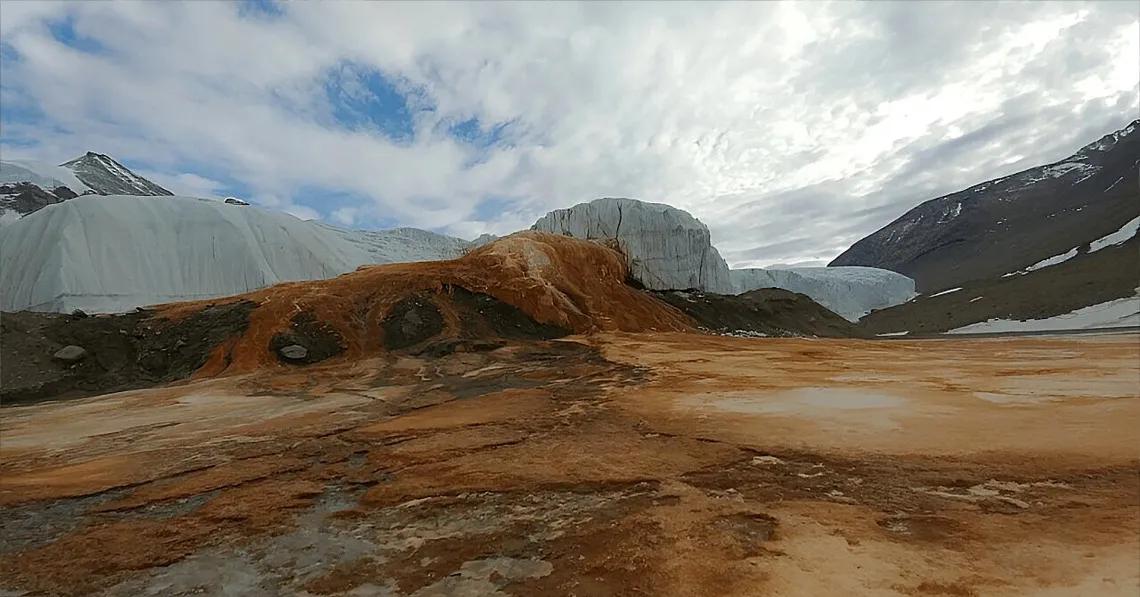Subglacial Microbial Life on Earth and Beyond

Blood Falls, Antarctica, where microbes live under the ice. Iron and other elements from the bedrock below the ice become oxidized when it interacts with air, producing the rusty red coloring.
Jill Mikucki
Single-celled organisms were the first life forms that evolved on Earth billions of years ago and have been around much longer than humans and other multicellular organisms. They are also metabolically diverse and can thrive in environments that we humans deem extreme—such as at the bottom of the ocean in piping-hot hydrothermal vents, in extremely salty lakes, and even within rocks.
Europa—an icy Jupiter moon
The first place to look for life outside Earth is within our solar system, where distances between us and potentially habitable worlds are still manageable for spacecraft flybys and even sampling missions. Venus, Mars, and many moons of Jupiter and Saturn are all of interest to astrobiologists, though Europa, one of Jupiter's 95 moons, is a particularly promising candidate world. Europa is an icy ocean world where plumes of water spurt from an ocean below a thick ice crust.
Though the surface temperature perpetually lurks below a cool -220°F, Europa excites many astrobiologists as a possible site for life in our solar system because of its subglacial ocean. Water is important for the habitability of a planet by life as we know it; a polar solvent like water is essential for the biochemical reactions that drive all life on Earth and can also provide a thermally stable habitat for organisms to live and evolve.
Along with water, carbon is another important building block for life as we know it. All of life's essential macromolecules are based on carbon—sugars, proteins, DNA, and lipids are all comprised of carbon atoms arranged in various shapes, including rings, sheets, and chains.
In Sept. 2023, two independent teams of scientists found that the solid carbon dioxide (CO2) on Europa's surface most likely originates from its subglacial ocean, as its location on the surface coincides with geological features that indicate the transport of material from below the ice.
One team also hypothesized that the oceans are oxidized, a chemical condition that supports Earth's current biosphere and thus favors habitability by life as we know it. Though scientists were not able to definitively determine the source of the CO2 on Europa, the confirmation that carbon exists on Europa has fueled the fire of astrobiologists who believe that it could host microbial life.
Signs of life like organic carbon and water are broadly known as biosignatures, chemical or physical markers that specifically require a biological origin. Though no single biosignature is enough to claim life in a faraway world, finding many complementary biosignatures on bodies like Europa can strengthen the argument that life, in some form, could exist beyond Earth.
